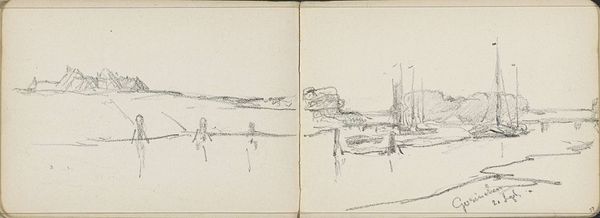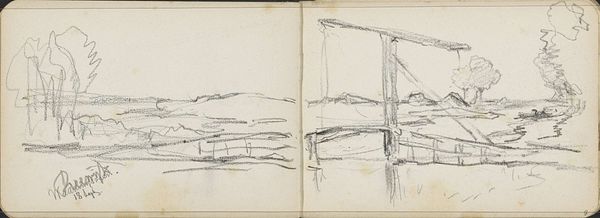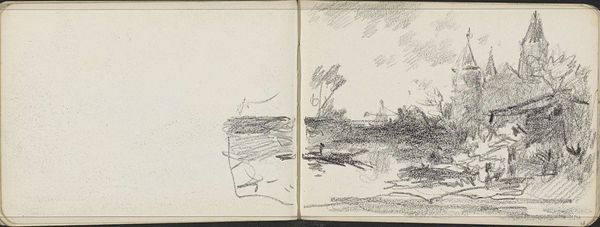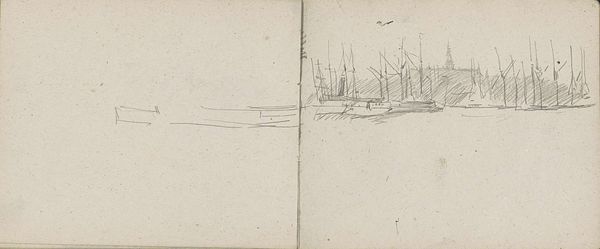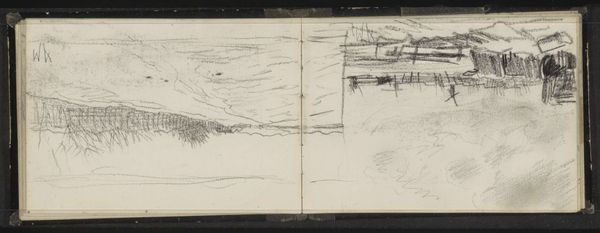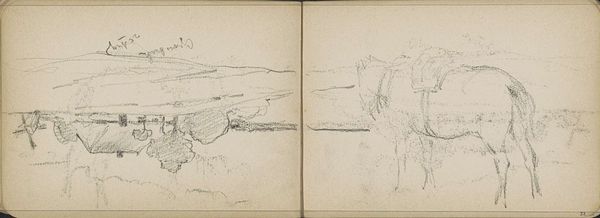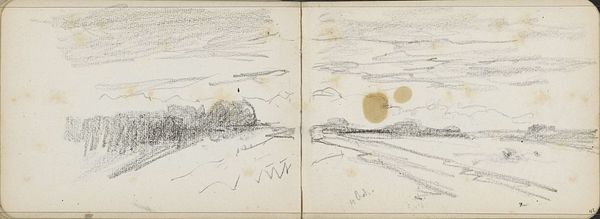
drawing, pencil
#
drawing
#
pen sketch
#
sketch book
#
landscape
#
pencil
#
sketchbook drawing
#
realism
Copyright: Rijks Museum: Open Domain
Curator: Here we have Willem Cornelis Rip's "Grazing Cattle in a Meadow near Ravenstein," likely sketched between 1866 and 1922. It's a pencil drawing, possibly a quick study within a sketchbook. Editor: It has the immediate feeling of transience – fleeting, almost ephemeral. The marks are so light, and the composition is so open... It almost feels unfinished. Curator: Precisely. Notice how the lines operate. The artist employs hatching and scribbling to render forms with incredible economy. See the short, repeated strokes building up the bodies of the cows, or defining the horizon line. The blank space surrounding them is just as crucial; it accentuates the immediacy of the moment. Editor: I'm struck by the depiction of grazing cattle; across many eras, the cow is associated with abundance, nourishment, gentleness, and maternal themes. Set against the backdrop of Ravenstein, with its rich history, I wonder if Rip intended to evoke a sense of rural stability or even national identity. Curator: An interesting hypothesis. However, given the nature of a quick sketch like this, such overt symbolic intention is difficult to ascertain. It might have simply captured what he saw. What’s more interesting for me is Rip's emphasis on formal balance, even within this fleeting sketch. Consider the division of the composition: the positioning of the animals and the subtle interplay of positive and negative space. Editor: But the cow as a symbol appears repeatedly in art history – and often serves as the object of pastoral idealization, even here. Even though the piece is very sparse in style, and even "unfinished" as I put it, it reminds me of works such as Potter’s famous painting of "The Young Bull" from the 17th century, or other depictions of farm animals that imply human management and natural order. Curator: And that's a productive point. Though I maintain we risk imposing meanings too freely. But the connection to an artistic lineage that romanticizes rural life surely does speak to how we consider the cultural role of these images, even as casual sketches, and to our relation with these symbols, today. Editor: Yes, on balance, it remains striking how even such minimal visual gestures evoke layered cultural and artistic echoes across time.
Comments
No comments
Be the first to comment and join the conversation on the ultimate creative platform.
